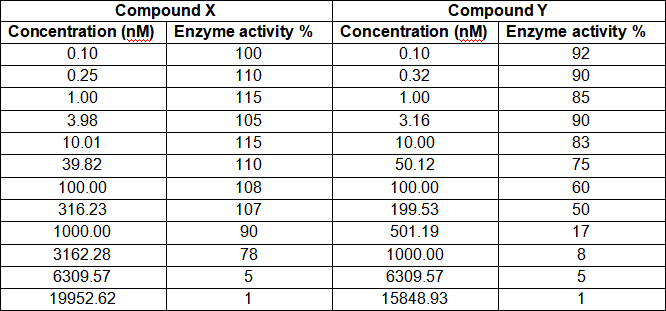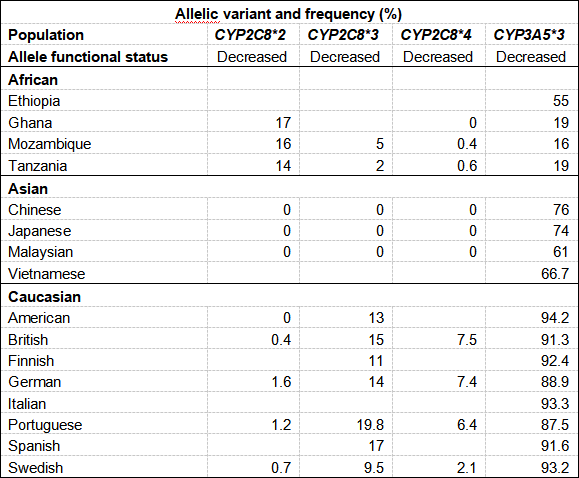PHAY0029 Data Handling Coursework
Hello, dear friend, you can consult us at any time if you have any questions, add WeChat: daixieit
PHAY0029 Data Handling Coursework
Antimalarial Drug Development
PART A (3 questions)
Malaria is a tropical disease that kills around half a million people annually and pharmaceutical companies in collaboration with NGOs and governments are working towards the development of next generation antimalarials to address the ever-growing threat of parasite resistance. An emerging target for antimalarial drug development is the enzyme P. falciparum asparate transcarbamoylase (PfATC) that catalyses the second step of the pyrimidine biosynthesis pathway. Enzymatic reactions within pyrimidine biosynthesis have been proven to be essential for the proliferation of the parasite and therefore, the inhibition of this pathway can be employed in the treatment of malaria. Compounds X and Y were identified as part of this joint effort, using a fragment-based development approach. Both compounds were determined to be allosteric inhibitors of P. falciparum asparate transcarbamoylase (PfATC). The data from the PfATC inhibition assay are shown in Table 1. Both compounds were also tested for activity against the human aspartate transcarbamoylase (HsATC) enzyme, using the same experimental conditions. The data from the HsATC inhibition assay are shown in Table 2.

Table 1: Enzyme (PfATC) activity measured as % displacement of a fluorescent substrate at various concentrations of compounds X and Y.

Table 2: Enzyme (HsATC) activity measured as % displacement of a fluorescent substrate at various concentrations of compounds X and Y.

As a team leader, you need to analyse the data and prepare a report to a head of department on the project progress by addressing the following points:
1. Generate graphs of %enzyme activity vs logarithm of concentrations for all data in Tables 1 and 2 and estimate the IC50 values for each compound against both enzymes. (Note: Graphs must be properly labelled i.e main title, axis titles and units). (20 marks)
2. Provide a possible mechanism of action for these compounds and how they produce a physiological effect. (15 marks)
3. Provide a recommendation for the head of the department as to which of these compounds warrants further development as an antimalarial drug. Explain how the data supports your recommendation. (15 marks)
PART B (2 questions)
The data presented in this section provide a timeline of the pharmaceutical industries’ spending, revenue and areas of focus worldwide. As a consultant you need to analyse the data and identify trends and forecast areas of therapeutic interest. The data presented in Table 3 were collected from the Pharmaceutical Worldwide Market report Statista and Global Trends in R&D 2023 report IQVIA where the total spending in R&D is presented alongside total revenue, prescription drug sales, and novel active substances launches. The latter is further dissected in Figure 1 per therapeutic area.
Table 3: Global data related to the pharma industry including total R&D spending, revenue, drug sales (excluding generics and orphan drugs), and novel active substances launches from 2014-2022. Data obtained from the Pharmaceutical Worldwide Market report Statista* and Global Trends in R&D 2023 report IQVIA**.

Figure 1. Global NAS launches from 2013-2022. NAS is a new molecular or biologic entity or combination where at least one element is new. Includes NASs launched anywhere in the world by year of first global launch. Figure adopted from Report: Global Trends in R&D 2023: Activity, Productivity and Enablers. IQVIA Institute for Human Data Science, Feb. 2023.
As a consultant, you need to provide a report to a client firm on the value of the R&D investment and important therapeutic areas by analysing the available data and discussing the following points:
1. Use the data in Table 3 to graphically represent the relationships between R & D investments and the number of NSA launches and the total revenue. Is there a correlation between these entities? (Note: Graphs must be properly labelled i.e main title, axis titles and units) (20 marks)
2. Based on the data presented in figure 1 discuss the therapeutic areas of interest by identifying any trends and/or shifts of focus and comment on the pharmaceutical industry’s commitment to fighting infectious diseases such as, malaria. (15 marks)
PART C (1 question)
Drug metabolism involves a complex interplay between metabolic enzymes among which is the cytochrome P450 (CYP) family of enzymes. CYP1, CYP2 and CYP3 are the key sub-families of enzymes that are involved in phase I metabolism. Single nucleotide polymorphisms in CYP genes led to the formation of over 400 allelic variants across the three sub-families each demonstrating variations in enzyme activity ranging from no metabolic activity to rapid metabolic activity. Table 4 shows the allelic variant frequency for the CYP2C8 and CYP3A5 enzymes, known to be involved in the metabolism of antimalarial drugs, per population area.
Table 4. Frequency of CYP2C8 and CYP3A5 allelic variants across populations.

1. Based on the data presented in Table 4 discuss the genetic variability of CYP alleles across populations and the implications for drug discovery. What recommendations would you make to pharmaceutical companies that are currently developing antimalarial drugs? (15 marks)
This report should be limited to no more than 6 figures (including any diagrams of mechanism) and no more than 1500 words.
Submit as electronic copy (Word or pdf) to Moodle by 9am Monday 13th Nov 2023.
2023-11-09
Antimalarial Drug Development